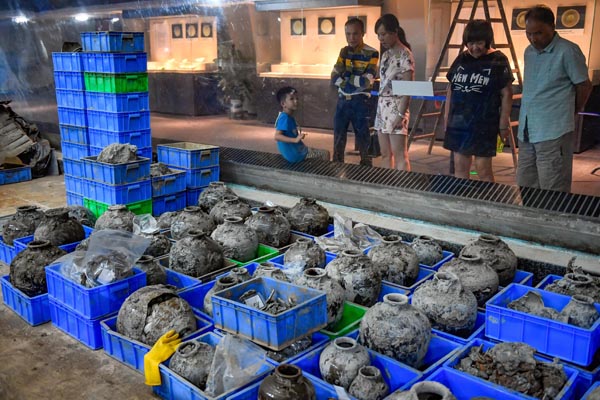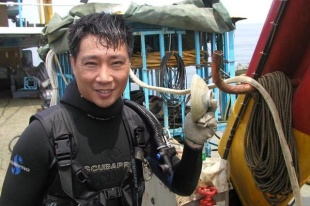Diving deeper into the past


At the end of 1987, a specialist from Japan, Tanabe Sousan, head of the country's underwater archaeology research center, was invited to China to talk about his experience and expertise in underwater archaeology.
"Tanabe's lessons were more theoretical than practical, although he talked about many studies he had been involved with in Japan and other countries such as Syria," Cui says.
In 1989, 11 archaeologists from Beijing and the provinces of Guangdong, Shandong and Fujian, as well as the Guangxi Zhuang autonomous region, took diving lessons from Australian underwater archaeologists in Qingdao and became qualified divers.
"Being a good diver is not enough," Cui says. "Trusting colleagues and teamwork is critical when you're working underwater."
Underwater archaeologists work in pairs so they can properly deal with potential situations such as equipment breakdown and water disturbance.
In November 1989, a joint investigation team with Chinese and Japanese researchers was founded. However, because of poor weather and unfavorable water conditions, the research they were to carry out had to be called off.
From 1990 to 2000, Cui and others were doing underwater archaeology along the coastlines of Shandong, Liaoning and Fujian provinces, which Cui described as "a diagnostic tour" to reconnoiter the scale of the country's underwater treasure trove.
Research on Nanhai No 1 was not resumed until 2001, when there were enough experienced hands and adequate funds available.
"The ship is well preserved because it was buried under thick mud," Cui says. "However, it is that very mud, as well as low visibility, that adds difficulty to archaeological work."
Determining the ship's exact location, measuring its size and removing the mud could not all be done at the same time, because even the most skilled diver can only stay underwater for two hours at most.
However, in addition to those limitations, the work did not go as smoothly as planned, Cui says.
Between 2001 and 2004, eight separate investigations were conducted to find out the condition of Nanhai No 1 and the artifacts inside it.
"Because of the difficulty in doing archaeological work underwater, we decided to excavate the shipwreck as a whole and build a museum for it," Cui says.
Different shipwrecks call for very different archaeological methods. For example, in dealing with the wreck of Nan'ao No 1, found in the waters of Guangdong in 2007, the ship was left in the place it was found because it was only 1.5 meters under water and could be seen clearly.
However, the wreck of Huaguangjiao No 1, found in the waters of Hainan, was dissembled underwater and reassembled on land.
"What method archaeologists use depends on the condition and value of the ship, its environment and other considerations," Cui says.
In 2004, at the same time as the Guangdong Maritime Silk Road Museum on Hailing Island, 280 kilometers southwest of Guangzhou, was being built, the refloatation of Nanhai No 1 began.
"Deciding to build a museum for the ship was a huge risk, because we weren't even sure whether we could successfully refloat the wreck," Cui says.





































